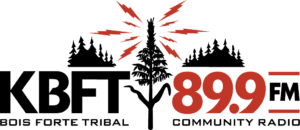By K.E. MacPhie
Earlier this year, the Shakopee Mdewakanton Sioux Community (SMSC) brought bison back to the traditional land of the Dakota people for the first time in over 100 years. They are the most recent Minnesota Tribe welcoming back our bison relatives to the state they used to inhabit.
Where there were once millions of bison roaming Minnesota – plains bison in the south, and wood bison to the north – they were systematically eradicated to under 1,000 bison in the whole country by the turn of the twentieth century. The bison remained endangered and mostly in captivity while caretakers from Tribes, ranches, and zoos fought to retain their existence. Bison were brought out of conservation into the wild, and herds were developed and grown at different locations around the country to help generate genetic diversity. Now, 100 years later, our tribes are going back to our roots and our original relationship with the bison: herding them for food and resources in culturally and ecologically respectful ways.
The Prairie Island Indian Community, another Dakota Tribe about an hour east of Shakopee, started their herd with one bison (named Shooting Star) back in 1992, and now they have close to 200 at the Edwin Buck, Jr. Memorial Buffalo Project near Red Wing. They have opted not to sell their meat and wares commercially, but to harvest about ten bison per year to provide for their tribal members. Prairie Island is less focused on commercializing their herd, and instead is part of the Intertribal Buffalo Council (ITBC) focused on maintaining the health and genetic integrity of their herd so they can share with other Tribes to resupply and diversify bison herds around the country.
The genetic makeup of the American bison was tainted when, during their eradication and early efforts for revitalization, some ranchers opted to breed them with their cattle to create “beefalo,” a hybrid that would produce meat at the same rate as cows, but with the lower cholesterol and fat that bison meat provides. Now, as revitalization is more understood and taken by people who care more for the animals themselves than for their meat production metrics, cattle DNA is tested and culled out of the herds to help bring their genetics as close to its original state as they are able. The only two known herds that were not affected by the cattle integration were the Wind Cave Bison Herd in South Dakota and the Henry Mountain Herd in Utah. The herds being raised in Minnesota are getting close, and tribal conservation efforts are leading the way in authentic restoration of our herds.
The reintroduction of buffalo enhances the prairies on tribal lands in Minnesota by
promoting biodiversity. (Photo Credit SMSC.)
But not all Tribes are focused on larger efforts. At Red Lake Nation, the idea for a herd began when Chairman Siki was elected ten years ago and listened to the concerns from his constituency that they were tired of relying on outside sources for food security.
This goes back through the decades as the US government has continuously promised to provide for tribal people and has either outright declined in systemic efforts to starve us out (Sandy Lake Tragedy) or in substandard supplies that have offered little nutrition or consideration of our ancient gut systems and poisoned us toward diabetes, cancers, and other issues (commodity foods). And even now, when USDA faces a food shortage, the Tribes are the first to be cut and the last to be caught up on missed shipments.
But I digress; back to Red Lake.
Red Lake Nation took the time to learn what they needed to do to manage a herd at Chairman Siki’s insistence: they went to training provided by the ITBC, applied for grants, and prepared land they already owned on the reservation. Then, in 2021, they received their first seven bison from the Wind River Herd. Over the years, they have added more, and now they finally have enough of a population and mature enough bison to begin harvesting them for food and resources.
Herd manager, Cherilyn Spears, told reporter, Melissa Oleson at MPR, about how they intended to bring in their Lakota relatives to conduct the ceremony as they begin the process. Their intent, for now, is to prioritize the meat and resources to elders and to the schools nearby, especially Endazhi-Nitaawiging (“The Place Where it Grows”), the Ojibwe immersion charter school that opened in 2022, and has integrated into their curriculum the cultural values and practical utilization and process of bison harvesting. Just as Red Lake has trained and staffed the herd managers from local tribal members, they are also training and raising the next generation of bison caretakers in these students.
The Grand Portage Band of Chippewa, 300 miles east across the Northwoods from Red Lake, received their first seven bison to form Bizhiki Ranch on the reservation, located near the border of Canada. They faced a problem their Dakota counterparts didn’t: finding enough grassland in the heavily wooded and swampy terrain of northeast Minnesota. Fortunately, planner and herd manager, Jared Swader, was up to the task, and has planted hundreds of acres of grassland to support the herd. They have since acquired more bison, more grassland, and are just a few steps behind Red Lake in their goal to create a self-sustaining food source for their reservation population, which is substantially smaller at only 500 people compared to Red Lake’s 5,000.
White Earth and other tribes are looking at bringing bison to their reservations, but really, the bigger talk has been about sharing resources and creating trade agreements across Tribes. With herds on the four corners of the state, there may be enough for each of them to provide for their nearby reservations as they grow. None of the current Tribes have stated goals to widely commercialize, and there is a shared understanding that the bison take care of us and we are responsible for taking care of our own. Keeping it local and keeping it Tribal will be the key to creating and maintaining a culturally conscious successful bison economy for all of us.
The post Bison make a comeback with tribal help first appeared on The Circle News.


